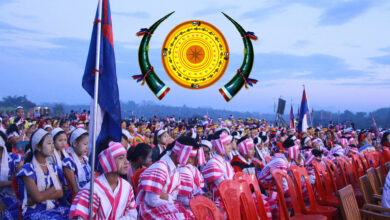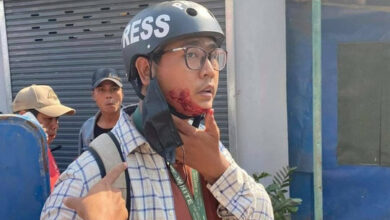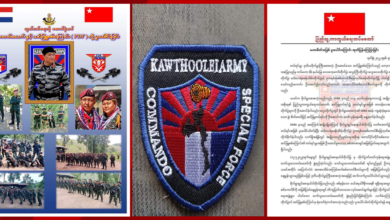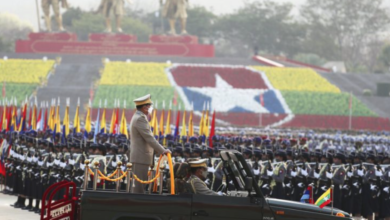Karen women’s voices vital in peace talks

The participation of women in future peace talks between the ethnic groups and the central government will be critical contribution to achieving lasting peace in Burma. Durable peace goes beyond the mere absence of conflict, and whilst the Burmese military and the Karen National Liberation Army (KNLA) can put a halt to actual fighting, greater participation by civil society (including women’s groups) in political dialogue can contribute to longer-term entente between the ethnics and the government of Burma.
The United Nations Security Council Resolution 1325 calls for the participation of women at all levels of decision-making on conflict resolution and peace building. Successive resolutions (1820, 1888, 1889, and 1960) call for ending conflict-related sexual violence, establishing a strong system of accountability for such abuses (including monitoring and analysis specific to conflict-related sexual violence), and strengthening the leadership and expertise of women both within the UN and those that should be involved in peace dialogue. Resolution 1325 also calls for parties to support local women’s peace initiatives and conflict resolution processes, and including gender perspectives by considering the specific needs of women and girls in the development and design of policy in all areas, and incorporating the perspectives, contributions and experience of women’s organizations in policy and program development.
So what is being done? In his March 2013 report on human rights abuses in Burma, the special rapporteur to the UN, Tomas Ojea Quintana, noted that he hoped civil society and affected communities including women, would be fully consulted and involved in peacemaking and peacebuilding processes, and recommended that the Burmese government should international assistance on these issues. Several policies are being pushed at Karen National Union peace negotiations with the Burmese government; for Thein Sein’s government to implement UN Resolution 1325, for the international community to participate in educating the government and the military about the resolution. The Karen Women’s Organisation also wants women to participate in political consultations on an equal footing with men, and be part of the various monitoring efforts to ensure that rights are being respected. But there is skepticism about how seriously the Burmese side is taking the issue of women’s issues and women’s representation. Speaking to Karen News, Central Committee of the KWO Blooming Night Zan said that, “they just sign the [Resolutions] paper, but they don’t practice”.
Women have only recently become involved in the political dialogue between Karen and Burmese leaders. The idea was first introduced in March 2012 by the Karen Women’s Association Central Committee members, Blooming Night Zan, Htoo Paw, and Paw Gyit, who have since strongly pushed the issue. In the past, there was not much understanding about the importance of women in peace dialogues, and now a precedent has been set, and both sides of the table have agreed that future meetings will involve members of the KWO. There is a good reason why women leaders should be involved in Burma-Karen talks.
First, women, girls, and children have suffered disproportionately as civilians in this more than 60-year civil war. Soldiers bear the physical and psychological scars of armed combat, but innocent civilians suffer outside direct conflict, at any time; rape, sexual violence, abuse, torture, and forced labor are widespread regardless of whether there is a ceasefire or not. Women are therefore as much involved in conflict as men are, even if they do not bear arms and fight against the enemy.
Second, women leaders have a much better understanding of what is happening to ethnic women, children, and girls than men do; they can much better represent the voices of those not engaged in armed combat than senior Karen male political and military leaders.
Third, a greater participation by women leaders in peace talks should translate in greater community awareness and education about what peace and democratic participation really means. If normal village people can understand what real peace should be, they can become more engaged at a grassroots level. At the moment, that understanding is lacking. A halt in fighting does not mean “peace”. According to Blooming Night, the KWO would hold seminars and meetings in different districts of Karen state to educate people about the peace process and what peace in Karen state and Burma really means, and the instruments being used to achieve that. Speaking to Karen News, Nan Myintzu Aye, a Karen migrant worker in Bangkok, expressed her sentiments. “The word Peace is a good sound for all. However, I don’t see the equal level of the people in Burma yet. All businesses are controlled by the authorities. So I have no idea to survive for my family in our country in this situation.”
Indeed, peace is more than the absence of conflict. There are several types of peace. Academic Benjamin Miller made the distinction between “cold” and “normal” peace. Cold peace was where the main issues in conflict had been mitigated, but not been fully resolved, the channels of communication only involved governments, plans for war were still present, and war was still a real possibility. “Normal” peace was where the conflict was resolved, some transnational ties had contributed to the resolution, contingency plans for war were still possible, and war itself was still possible. But according to his argument, the Karen and the Burmese will need to move to a “warm” peace for there to be a genuinely stable regional security system. That is, the issues of conflict have become irrelevant, there are strong government ties as well as highly developed transnational ties, and war becomes unthinkable.
This is where women’s participation becomes important – peace-building is also about building up the strength and participation of civil society. As previous scholarship by academic Kumar Rupesinghe in “Civil Wars, Civil Peace: An Introduction to Conflict Resolution”, has shown, civil-society actors can influence public opinion and express that opinion to leaders. The greater participation of civil society also increases the legitimacy of peace dialogue. As academic Camilla Orjulea discussed in her 2003 study on peace-building in civil war-torn Sri Lanka, civil society actors have the potential to address ethnic divides and public opinion with education and awareness-raising programmes, addressing political issues with informal diplomacy, and addressing economic issues through reconstruction and development. The inclusion of women in future peace talks and the overall peace dialogue will contribute to addressing conflicts of interest between ethnics and the central government in a holistic manner – not just through the narrow lense of military confrontation. It also gives more credibility to official consultations. Soldiers can stop a war, but women can also contribute to promoting longer-term and durable peace through promoting a more active civil society that reaches to the other side on issues beyond the military realm. – one that is workable at the community level as well. Peace, after all, is everyone’s profession.
*Christine Leah is a research analyst on military and strategic issues in Asia; Nan Paw Gay is a founding member of www.karennews.org.




